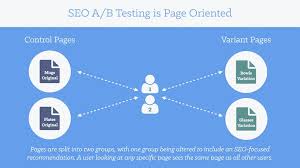The Key Components of a Successful Company Growth Strategy
For any business to thrive and stay competitive in today’s rapidly evolving market, having a well-defined growth strategy is essential. A growth strategy outlines the roadmap for expanding a company’s operations, increasing its market share, and ultimately achieving long-term success. Here are some key components that are crucial for developing a successful company growth strategy:
Market Analysis
Understanding the market landscape is fundamental to developing an effective growth strategy. Conducting thorough market research helps identify opportunities for expansion, assess potential risks, and gain insights into consumer preferences and trends. By analysing market dynamics, competition, and customer behaviour, companies can make informed decisions that drive sustainable growth.
Product Development and Innovation
Ongoing product development and innovation play a vital role in driving company growth. By continuously improving existing products or services and introducing new offerings that meet customer needs, businesses can attract new customers, retain existing ones, and stay ahead of competitors. Investing in research and development is key to staying relevant in a rapidly changing market.
Strategic Partnerships
Collaborating with strategic partners can significantly enhance a company’s growth prospects. By forming partnerships with complementary businesses or industry leaders, companies can access new markets, technologies, or distribution channels that would be otherwise challenging to reach independently. Strategic alliances can also provide opportunities for knowledge sharing and mutual benefit.
Diversification
Diversifying products, services, or target markets can be an effective growth strategy for mitigating risks and seizing new opportunities. By expanding into related industries or exploring untapped customer segments, companies can reduce dependency on a single revenue stream and create additional avenues for growth. Diversification also enables businesses to adapt to changing market conditions more effectively.
Talent Development
A skilled and motivated workforce is crucial for driving company growth. Investing in talent development initiatives such as training programs, mentorship opportunities, and career advancement pathways not only enhances employee satisfaction but also improves productivity and innovation within the organisation. Building a culture that values continuous learning and personal development is key to sustaining long-term growth.
Measurable Goals and KPIs
To track the effectiveness of a company’s growth strategy, it is essential to establish measurable goals and key performance indicators (KPIs). Setting clear objectives allows businesses to monitor progress towards their targets, identify areas for improvement, and make data-driven decisions to optimise their strategies. Regularly reviewing performance metrics helps ensure that the company remains on track towards achieving its growth objectives.
In conclusion, developing a comprehensive company growth strategy requires careful planning, strategic thinking, and continuous adaptation to changing market conditions. By incorporating these key components into their strategic planning process, businesses can position themselves for sustainable growth and success in the long term.
Understanding Company Growth Strategy: Key Insights and Approaches
- What is a company growth strategy and why is it important?
- How can market analysis help in developing a company growth strategy?
- What role does product development and innovation play in driving company growth?
- Why are strategic partnerships beneficial for a company’s growth strategy?
- How can companies effectively diversify as part of their growth strategy?
What is a company growth strategy and why is it important?
A company growth strategy is a comprehensive plan that outlines how a business intends to expand its operations, increase its market share, and achieve long-term success. It involves identifying opportunities for growth, setting clear objectives, and implementing strategic initiatives to drive sustainable expansion. A well-defined growth strategy is crucial for businesses as it provides a roadmap for navigating competitive markets, adapting to changing industry trends, and maximising profitability. By outlining the direction and priorities for growth, a company growth strategy helps align the efforts of employees towards common goals, fosters innovation and creativity, and positions the business for long-term success in a dynamic business environment.
How can market analysis help in developing a company growth strategy?
Market analysis plays a critical role in developing a company growth strategy by providing valuable insights into the competitive landscape, customer preferences, and emerging trends within the market. By conducting thorough market research, businesses can identify untapped opportunities for expansion, assess potential risks and challenges, and make informed decisions that align with their growth objectives. Understanding market dynamics allows companies to tailor their products or services to meet customer needs effectively, differentiate themselves from competitors, and position themselves for sustainable growth. In essence, market analysis serves as the foundation upon which a successful company growth strategy is built, guiding strategic decision-making and enabling businesses to capitalise on new opportunities for development and expansion.
What role does product development and innovation play in driving company growth?
Product development and innovation play a pivotal role in driving company growth by enabling businesses to stay competitive, meet evolving customer needs, and differentiate themselves in the market. By continuously improving existing products or introducing new offerings that address emerging trends, companies can attract new customers, retain existing ones, and enhance their overall value proposition. Innovation not only fosters creativity and ingenuity within the organisation but also opens up opportunities for expanding into new markets and staying ahead of competitors. Investing in product development and innovation is essential for businesses looking to sustain long-term growth and remain relevant in today’s dynamic business environment.
Why are strategic partnerships beneficial for a company’s growth strategy?
Strategic partnerships are highly beneficial for a company’s growth strategy due to the numerous advantages they offer. By collaborating with strategic partners, companies can gain access to new markets, technologies, or distribution channels that may be otherwise inaccessible. These partnerships enable businesses to leverage the expertise and resources of their partners, allowing for mutual benefit and shared success. Additionally, strategic alliances can help companies mitigate risks, accelerate innovation, and expand their reach more efficiently than if they were to go it alone. Overall, strategic partnerships play a crucial role in enhancing a company’s competitive advantage and driving sustainable growth in today’s dynamic business environment.
How can companies effectively diversify as part of their growth strategy?
Diversification is a common strategy that companies employ to expand their operations and mitigate risks. To effectively diversify as part of their growth strategy, companies should first conduct thorough market research to identify new opportunities and assess the feasibility of entering different industries or markets. It is essential to leverage existing strengths and capabilities while also considering how diversification aligns with the overall business objectives. Strategic partnerships or acquisitions can provide access to new resources, technologies, or customer segments that support diversification efforts. Additionally, maintaining a focus on innovation and agility allows companies to adapt to changing market dynamics and seize opportunities for sustainable growth through diversification.





